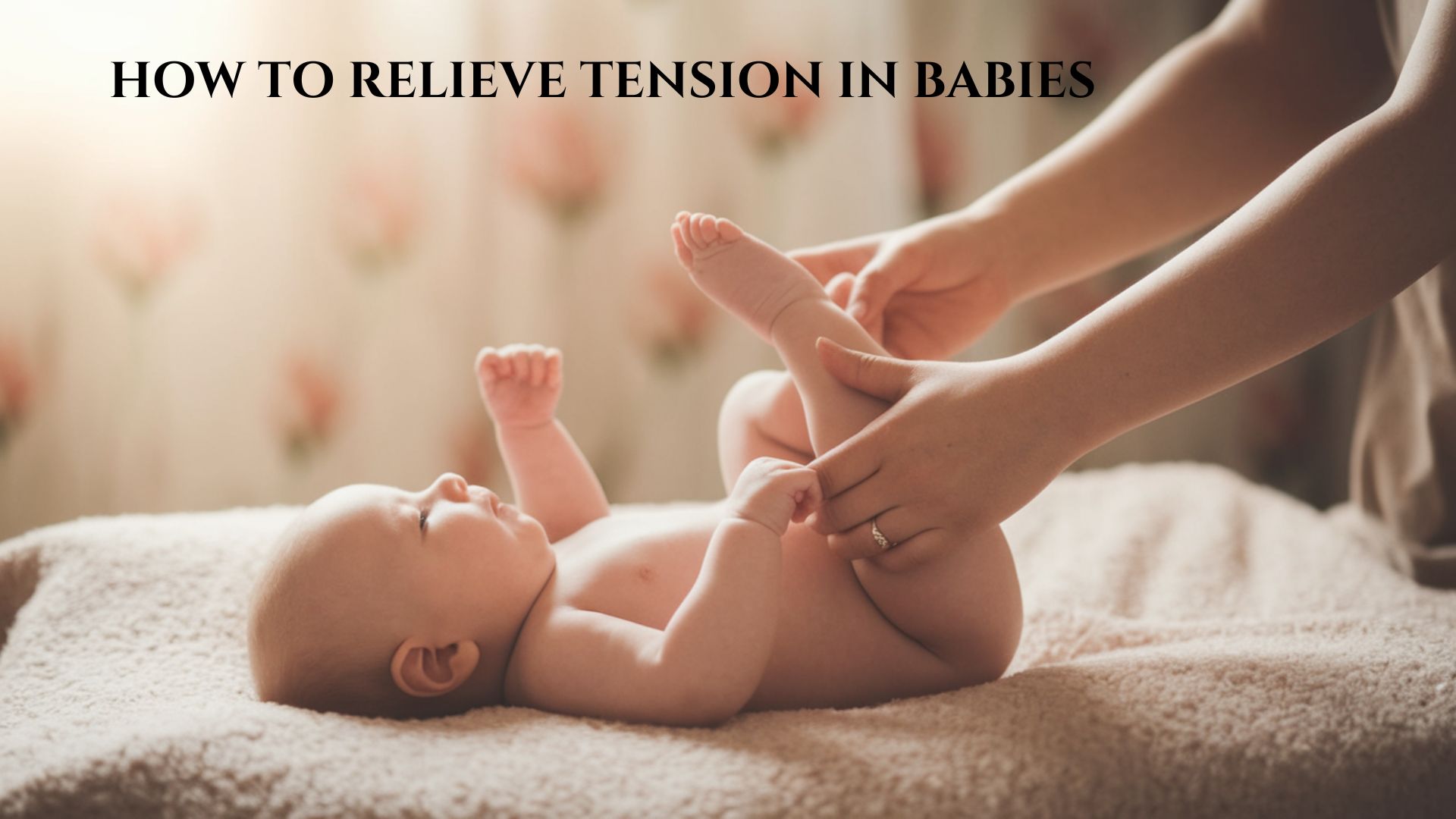
Have you ever wondered why your baby seems so tense? I’ve learned that babies experience tension from many sources – birth experiences, everyday discomforts, and sensitive personalities.
Sometimes, it’s simple things like hunger or loud noises. Other times, it’s more complex. Their tiny bodies can hold onto stress in surprising ways.
Tension manifests through tight muscles, arched backs, and fussy behavior. It can also affect how babies sleep, eat, and interact with the world around them.
I know how challenging it can be to see my little one uncomfortable. Understanding these challenges helps me provide better care and comfort.
Every baby is unique, and learning to read their signals is key to helping them feel relaxed and secure.
Why Does a Baby Get Tension?
Babies become tense when hungry or uncomfortable or when overwhelmed by noise, lights, or too much handling. Some infants naturally have more sensitive temperaments, reacting strongly to environmental changes.
Difficult births can leave physical stress in a baby’s body. Babies born through gentler deliveries often appear more relaxed initially. Pressure on the head during birth may cause discomfort that occurs as tension in the early weeks.
Tension manifests through tight muscles and clenched fists, disrupting feeding and sleep and impacting bonding with caregivers.
Gentle touch, quiet environments, and responsive care help babies release tension for healthier development.
How Does Tension Affect a Baby’s Development?

Sleep Patterns and Growth: I noticed my tense baby waking frequently and missing deep sleep cycles. Since babies grow most during sleep, I worried about his development.
His restless nights seemed to leave him tired during the day, potentially slowing his weight gain and overall growth.
Motor Skills and Physical Milestones: I watched my baby’s tight muscles making movement difficult. Rolling over and reaching for toys took extra effort with her constantly clenched body.
While other babies moved freely, my little one struggled with these basic skills, delaying her natural physical development.
Emotional Regulation and Bonding: I felt tension creating a barrier between us. My stressed baby had trouble calming down in my arms.
His extended crying and difficulty relaxing affected our connection. I worried these early struggles might shape how he handles emotions as he grows older.
Signs Your Baby May Be Holding Tension

- Body Stiffness or Arching: I watched with concern as my baby tensed during feedings, his tiny back arching away from me. When I held him close, instead of melting into my arms, his body remained rigid. His shoulders hunched up, and he’d straighten like a little plank against me, making our cuddle time uncomfortable for us both.
- Trouble Sleeping or Soothing: I tried everything to help my baby sleep—gentle rocking, soft bouncing, quiet lullabies—but she resisted. When I thought she was asleep, she’d jolt awake. Nighttime became a battle as she fought sleep despite exhaustion. Her naps grew shorter and more restless, leaving me feeling powerless as she struggled to relax.
- Clenched Fists and Tense Jaw: I grew worried seeing my baby’s fists constantly clenched, even when he seemed content. While nursing, his jaw would tighten, forcing him to break his latch repeatedly. Gently touching his cheek revealed surprising tension in such a small face. These quiet signals suggested something was bothering my little one.
- Excessive Crying Without Clear Cause: I ran through my mental checklist—clean diaper, recently fed, comfortable temperature—yet my baby’s cries continued. Her face flushed with effort during these episodes, her wails growing more intense despite my soothing attempts. This seemed beyond normal fussiness—as though she felt a discomfort I couldn’t see or remedy.
How to Relieve Tension in Babies?

I’ve found some gentle ways to help my baby release tension. These simple movements can make a big difference in how comfortable and happy my little one feels.
1. Hip Flexor Stretches: Releasing Lower Body Tension
I gently bend my baby’s knees toward their chest, holding for a few seconds before straightening their legs. I repeat this movement 3-4 times on each leg, always moving slowly and watching my baby’s face for any signs of discomfort.
This stretch helps release tension in the hip flexors that babies can develop from being in car seats or carriers. I notice my baby often seems more relaxed after these gentle movements.
2. Glute Stretches: Alleviating Tension in the Hips and Pelvis
I hold my baby’s feet together and gently move their knees outward and back in, creating a diamond shape with their legs.
I keep my touch gentle and movements smooth, doing this for about 30 seconds. This helps release tension in their glutes and hip area that builds up from lying down. I find this especially helpful after my baby has been in their bouncer or swing for a while.
3. Side-Body Stretches: Easing Tension Along the Torso
I carefully hold my baby’s arm and opposite leg, then gently bring them toward each other across their body. I have this stretch for a few seconds before releasing and switching sides.
This gentle twist helps lengthen the side body muscles that can tighten during crying episodes. I notice my baby often takes deeper breaths after these stretches, showing me they’re finding relief.
4. Sacral Rocking: Relaxing the Pelvic Area
I place my hand under my baby’s lower back and make small, gentle rocking motions from side to side. I keep my movements slow and rhythmic, continuing for about a minute while my baby lies comfortably on their back.
This helps calm their nervous system and releases tension in the sacrum and lower spine. I find this especially helpful before bedtime when my baby seems restless.
5. Shoulder Girdle Stretch: Relaxing the Upper Back
I gently hold my baby’s arms and bring them out to the sides, then across their chest in a hugging motion. I repeat this movement 5-6 times, always watching their face for comfort.
This helps loosen tight shoulders and chest muscles that can develop from startling or crying. I notice my baby’s breathing often becomes more relaxed after this stretch.
6. Body Circles: Full Body Relaxation for Babies
I support my baby’s head and move their body in gentle, circular motions while they lie on their back.I make small circles clockwise and counterclockwise for about 30 seconds in each direction.
This flowing movement helps their whole body release tension naturally. I find this especially helpful when my baby seems tense all over, but I can’t pinpoint the exact area.
7. Guppy Pose: Relieving Chest and Shoulder Tension
I place my baby on their tummy across my forearm, with their head supported in my hand and their arms and legs dangling comfortably. I gently walk around for a minute or two, allowing the natural bouncing motion to open their chest and shoulders.
This position helps counteract the tightness that develops from lying on their back. I notice my baby often makes contented sounds in this position.
Natural Ways to Create a Calm Environment

- Calming Routines for Sleep and Feeding I created simple, consistent routines before bed and meals—dimming lights and keeping quiet helped signal relaxation time. My calm breathing during feedings seemed to transfer to my baby, helping her settle more easily.
- Aromatherapy and Gentle Sounds I placed lavender nearby and used white noise to mask startling household sounds. Humming the same gentle melody during fussy times created a soothing atmosphere that noticeably eased my baby’s tension.
- Skin-to-Skin Contact Benefits I held my baby against my bare chest daily. His breathing synchronized with mine, muscles relaxed, and fists unclenched. This close connection regulated his temperature and heartbeat better than anything else we tried.
When to Seek a Doctor?
As a parent, I know that taking care of a child means staying alert to health signs. If my child seems to have constant tension or discomfort that doesn’t go away with my usual care, I’ll talk to a doctor.
I’m also watchful for any weird movements or postures that seem off or might show a developmental problem.
When my little one cries nonstop or seems unusually fussy in a way that doesn’t make sense, it’s time to get professional help.
Most importantly, if I see any signs of injury or something that looks seriously wrong, I won’t wait – I’ll get medical advice right away. Trusting my instincts and getting quick help can make a big difference.
Final Words
I’ve found gentle ways to help my baby release tension and feel more comfortable. Simple stretches like moving their legs, rocking their body, and creating soothing circles can make a big difference.
I watch their face carefully, looking for signs of relief. Some techniques work better than others, so I stay patient and observant.
Each baby is different, and what works one day might not work the next. The most important things are gentleness, love, and paying attention to my baby’s cues.
I’ve learned that my touch can be incredibly healing. Tension doesn’t have to win – with love and care, I can help my baby find comfort.
Remember, your gentle hands are the best medicine!
If you’re interested in more informational content on mothers and babies, feel free to click here and explore other blogs that you might enjoy.
FAQs (Frequently Asked Questions)
How Can I Tell if My Baby Is Experiencing Tension?
Look for arched back, clenched fists, stiff limbs, sleep difficulties, excessive crying, feeding issues, easy startling, or unusual irritability.
At What Age Can I Start Infant Massage to Relieve Tension?
You can begin with very gentle touch from the first weeks and introduce more structured techniques around 1-2 months.
How Often Should I Do Tension-Relief Exercises with My Baby?
Short 5-10 minute sessions 2-3 times daily work best, especially before sleep or after feeding.

